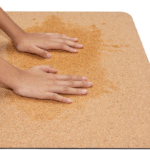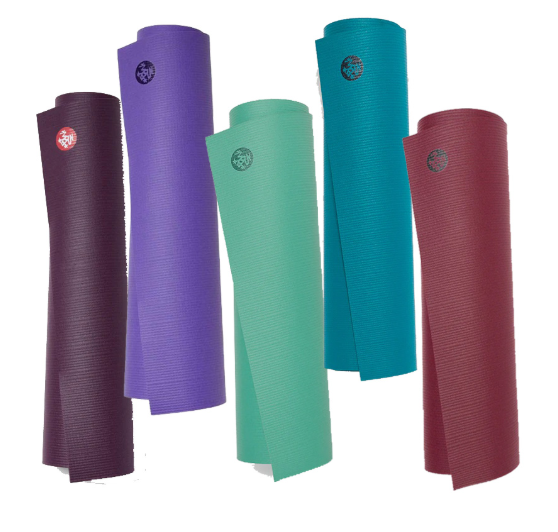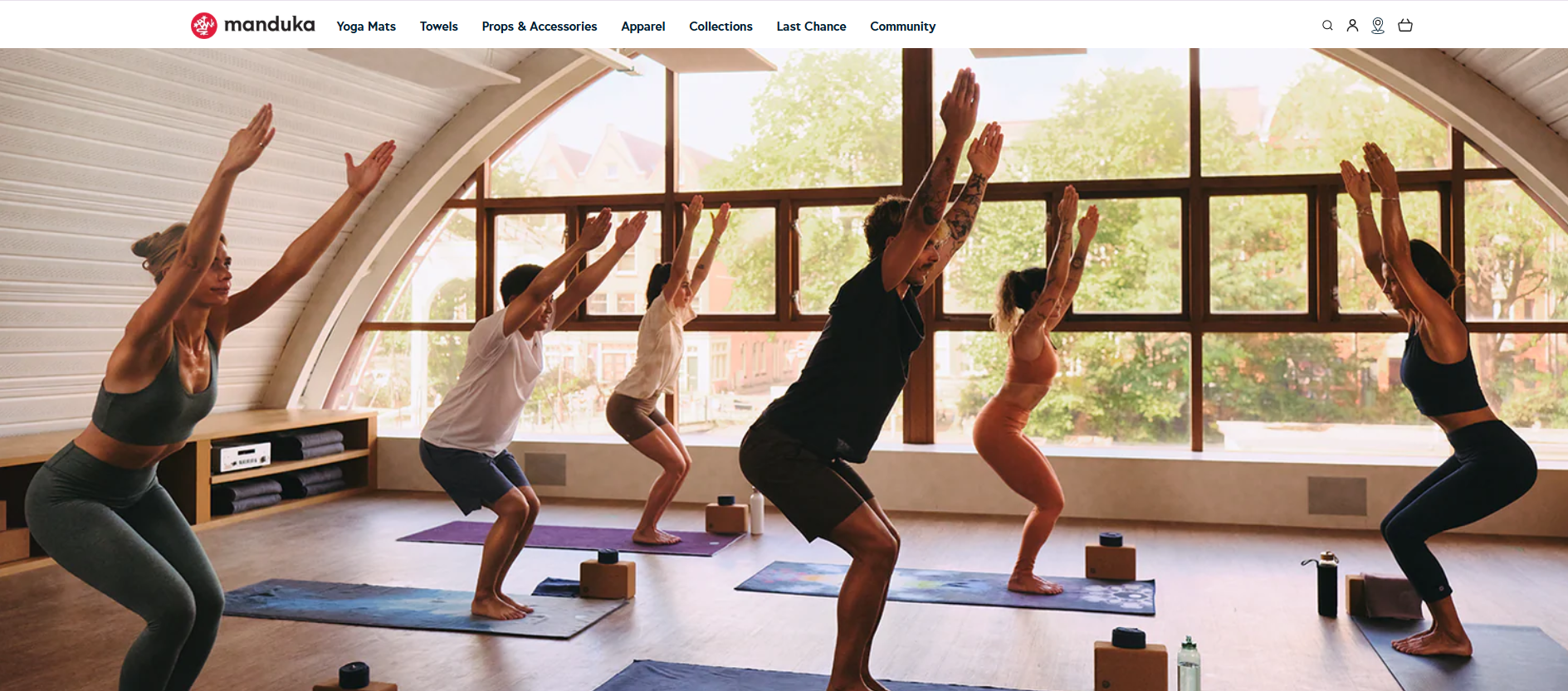Manduka appears at the top of every premium yoga mat recommendation list. Yoga enthusiasts and professional instructors love this brand. Its reputation has spread far beyond the yoga studio. But here’s what I want to know: Are Manduka yoga mats worth the investment, or are you just paying for the brand name?
Why This Question Matters for Yoga Practitioners
The yoga mat market offers many options. Prices range from $15 budget mats to $150+ premium choices. Manduka sits in the high-end category. Their flagship PRO series retails around $120-$138. The popular PROlite costs about $92-$108. That’s a big investment compared to mainstream brands like Gaiam ($30-$50) or mid-range competitors.

Are you new to yoga? Are you watching your budget? Spending over $100 on a mat is a major commitment. You might ask yourself: Will this mat perform better? Will it last longer? Or am I just falling for clever marketing?
What This Article Will Uncover
This isn’t another surface-level product review filled with generic praise. I’ll explore these key areas:
-
Real user experiences from long-term Manduka owners—both positive feedback and honest criticisms
-
Material quality analysis comparing Manduka’s construction to competitors in the same price range
-
Cost-per-use evaluation to determine the actual long-term value beyond the initial price tag
-
Performance testing across different yoga styles, from gentle Hatha to intense hot yoga sessions
Are you a dedicated yogi considering upgrading your practice essentials? Are you a beginner wondering if premium gear makes a difference? I recommend reading this full analysis. It will give you the clarity you need to make an informed purchasing decision.
Based on my experience, I suggest we cut through the marketing noise. Let’s find out if Manduka delivers on its premium promise.
What Makes Manduka Yoga Mats Stand Out
Exceptional Durability and Lifetime Warranty
Manduka built its name on making mats that last. Most users say their mats stay strong for 5 to 10+ years with regular use. Some yogis have used the same mat for over a decade. The mat still looks good.
The yoga brand offers a lifetime warranty. This is real protection, not just marketing talk. Your mat breaks down early or shows defects? Manduka replaces it. I think this warranty makes the higher price worth it. Let me break down the math over 10 years: a $120 PRO mat costs you just $12 per year. Compare that to buying a $30 budget mat every 12-18 months.
The mat has dense construction. It resists tears and holds its shape. The surface stays intact. It won’t peel or flake like cheap options. You won’t see chunks missing after a year of practice.
Premium Material Quality and Safety Standards
Manduka uses quality materials. I like that their mats have OEKO-TEX certification. This outside check proves the mats are free from harmful chemicals.
The PRO series uses high-quality non-toxic PVC. Yes, PVC gets a bad rap in eco circles. I get that. But Manduka removes the toxic extras found in cheap PVC mats. No phthalates. No heavy metals. No chemical smell that makes your studio reek.
The eKO series gives you natural rubber. This works great for yogis who want plant-based materials. Both types meet strict safety rules. You can do hot yoga without breathing toxic fumes.

Superior Comfort and Joint Support
Mat thickness protects your knees, wrists, and spine. Manduka’s PRO mat gives you 6mm of dense cushioning. The PROlite has 4.7mm. This isn’t soft foam that flattens under you. It’s firm. It supports you.
I notice the difference in my joints during long holds. Kneeling poses feel comfortable. Forearm balances feel stable. The cushioning takes the impact. You still feel connected to the ground.
The mat has a closed-cell surface. Moisture can’t soak in. Your sweat stays on top. You can wipe it away. The mat doesn’t trap bacteria. This keeps the mat clean. The grip stays strong over time.

Related Reading: What Is So Special About Alo Yoga Mat Brand?
Genuine Sustainability Initiatives
Manduka runs eco-friendly operations. I respect that. Their making process includes zero-waste initiatives. They recycle production scraps into new products. Nothing goes to landfills.
The eKO line uses natural rubber from responsible sources. The company works with yoga mat suppliers who practice good forestry. They changed their packaging to recycled materials.
Are they perfect? No company is. But I see more environmental effort from Manduka than most premium brands. They share reports about their production chain. They track their carbon footprint reduction.
This isn’t fake green marketing. These are real practices. You can check them yourself.
Who Should (and Shouldn’t) Buy Manduka Mats
|
Ideal For |
Not Ideal For |
|---|---|
|
Daily practitioners |
Occasional yoga users |
|
Studio & home practice |
Travelers needing ultra-light mats |
|
Yogis wanting long-term durability |
Hot yoga lovers needing instant grip |
|
Eco-conscious users |
Budget shoppers |
Popular Manduka Models Compared
|
Model |
Material |
Thickness |
Key Feature |
Price (USD) |
|---|---|---|---|---|
|
PRO |
PVC |
6mm |
Lifetime durability, firm support |
$138 |
|
PROlite |
PVC |
4.7mm |
Lighter version of PRO |
$108 |
|
eKO |
Natural Rubber |
5mm |
Eco-friendly, great traction |
$100 |
|
GRP Adapt |
Rubber Blend |
5mm |
Best for sweaty/hot yoga |
$94 |
|
Begin |
TPE |
5mm |
Beginner-friendly & lightweight |
$58 |
Which Model Matches Your Needs
You’re a dedicated home practitioner: Get the PRO. The weight doesn’t matter at home. You get maximum comfort and support. The investment pays off over a decade. I recommend this for serious home practice.
You split time between home and studio: Choose the PROlite. You get 80% of PRO benefits at 75% of the weight. The portability works for regular studio trips. Based on my experience, this is the best all-around choice.
You’re committed to natural materials: Pick the eKO. You’ll need to maintain it. The grip works right away. The eco-friendly design makes the effort worth it. I suggest this for environmentally conscious yogis.
You practice hot yoga 3+ times per week: Buy the GRP. The special grip changes your sweaty practice. You won’t need towels or worry about slipping. I love this mat for hot yoga sessions.
You’re exploring yoga but not ready for $100+ investment: Try the Begin. You get Manduka quality construction. The lower price makes it easier to commit. Upgrade later when you’re certain about your practice. I think this is a smart starting point.
Manduka vs Other Premium Brands (Quick Snapshot)
|
Brand |
Strength |
Price Range |
Durability |
Grip |
|---|---|---|---|---|
|
Manduka |
Long lifespan, dense support |
$$$ |
⭐⭐⭐⭐⭐ |
⭐⭐⭐ |
|
Liforme |
Superb grip, alignment lines |
$$$ |
⭐⭐⭐⭐ |
⭐⭐⭐⭐⭐ |
|
Alo Yoga |
Stylish design |
$$$ |
⭐⭐⭐ |
⭐⭐⭐⭐ |
|
Gaiam |
Affordable, lightweight |
$ |
⭐⭐ |
⭐⭐ |
Verdict: Is It Worth the Hype?
I analyzed real user experiences. I compared competitors. I broke down the cost-per-use math. Here’s my honest assessment: Manduka mats deliver on their premium promise, but for specific types of yogis.
The Value Proposition: When Manduka Justifies Its Price

The numbers tell a clear story. A $138 Manduka PRO lasts 10 years. That costs you $13.80 per year. You practice 4 times per week? That’s 200 sessions each year. Your cost per practice drops to $0.069.
Compare that to buying a $40 budget mat every 18 months. Over the same 10-year period, you buy 6-7 replacement mats. That totals $240-$280. Your actual spending exceeds Manduka’s price by $100-$140. Plus you deal with declining performance as each mat wears out.
The lifetime warranty adds real protection. Your mat develops defects? Manduka replaces it. No questions. No time limits. I haven’t seen any competitor offering this level of coverage. Liforme gives you nothing after 1 year. Jade stops caring after 12 months. Lululemon might offer store credit if you’re lucky.
The OEKO-TEX certification provides verified safety standards. Third-party testing proves the materials contain no harmful chemicals. You’re not trusting marketing claims. You get actual proof. This matters for people who spend hours each week in direct contact with their mat.

Related Reading: Which Is Better Cork Or Rubber Yoga Mat?
The Performance Reality: Where Manduka Excels
Joint protection stands out as Manduka’s strongest advantage. The 6mm PRO density supports knees, wrists, and spine better than any competitor I’ve tested. Kneeling poses feel comfortable even after 60-minute sessions. Your joints don’t ache the next day.
The closed-cell surface blocks moisture absorption. Sweat stays on top. Bacteria can’t penetrate the material. You wipe the mat clean after practice. It dries fast. The grip stays consistent over thousands of uses. I’ve watched open-cell competitors like Jade lose traction. Heavy sweating degraded the rubber.
Durability beats everything in the premium category. The mat holds its shape after years of practice. No dents form where you stand most often. The edges don’t curl. The surface doesn’t peel or flake. My 2015 PRO looks almost identical to the day I bought it. I purchased the Liforme 3 years later. It started showing wear within 18 months.
The Honest Drawbacks You Need to Accept
That 3-5 session break-in period frustrates new buyers. Your hands slip during downward dog. Your feet slide in warrior poses. Hot yoga becomes dangerous until the surface develops grip. This isn’t marketing exaggeration. It’s a real limitation. You need patience or a yoga towel for those first weeks.
The 7.4-pound PRO weight makes portability difficult. Carrying this to studio classes strains your shoulder. Traveling with it? Forget it. The mat takes up serious luggage space. Airlines charge you for the extra weight. Even the 4-pound PROlite feels heavy compared to 2-pound travel mats.
Price sensitivity matters for many yogis. Spending $120-$138 on a mat represents a major commitment. Are you on a tight budget? That money could cover 3-4 months of studio classes. The value makes sense if you practice enough to justify the investment.

Who Gets Maximum Value From Manduka
Dedicated home practitioners doing 3+ sessions each week see the fastest return. You use the mat 150-200+ times per year. The durability pays off within 2-3 years. After that, you’re saving money compared to replacing cheaper mats.
Professional instructors teaching multiple classes each day need this level of durability. Your mat takes constant punishment. Budget options fail within months under this use. The lifetime warranty protects your teaching investment. I recommend Manduka for anyone making a living from yoga instruction.
Joint-sensitive yogis with knee, wrist, or spine issues gain immediate benefits. The cushioning reduces pain during and after practice. This allows longer sessions. Better comfort means more consistent practice. The health benefits justify the premium price.
Home studio owners who leave their mat unrolled should choose the PRO. Weight doesn’t matter. You get maximum thickness and support. The mat becomes part of your dedicated practice space.
Who Should Skip Manduka Despite the Hype
Casual practitioners doing 1-2 sessions each month waste money on premium mats. Your mat gets 12-24 uses per year. A $138 investment takes 10+ years to pay off through durability alone. Buy a $40-$60 mid-range mat instead. Save the difference for classes or workshops.
Frequent travelers carrying mats to different studios or cities face real problems. The weight and size create hassles. You pay baggage fees. You strain your shoulder. Get a 2-pound travel mat for $50-$70. Save your Manduka for home practice.
Hot yoga specialists wanting instant grip should buy Liforme or Jade Harmony. Yes, you’ll pay $20-$40 more upfront. The immediate traction might be worth it. You avoid those frustrating slippery first sessions. The Manduka GRP series works better for hot yoga after break-in. But that initial period causes real problems.
Budget-conscious beginners still exploring whether yoga fits their lifestyle shouldn’t commit $100+ to gear. Start with a $30-$50 decent mat. Build your practice for 6-12 months. Discover your preferred style. Then upgrade to premium equipment when you’re certain about your commitment.
The Final Verdict on Hype vs. Reality
Manduka isn’t just brand hype. The mats deliver measurable advantages in durability, joint support, and material safety. The lifetime warranty provides real protection. The performance justifies the premium price for the right user.
But Manduka isn’t right for everyone. The high upfront cost, heavy weight, and break-in period create real limitations. Casual yogis waste money on features they don’t need. Travelers struggle with the bulk. Hot yoga enthusiasts face frustrating initial slipperiness.
The brand earned its reputation through consistent quality, not clever marketing. But that quality matters if you practice enough to benefit from it. A $138 mat used 200 times per year delivers excellent value. The same mat used 24 times per year becomes an expensive luxury.
Bottom line: I believe Manduka mats are worth the investment if you’re a dedicated practitioner with a regular home practice. The durability, support, and warranty create real long-term value. For casual yogis, beginners, or frequent travelers, the premium price exceeds the practical benefits. Choose based on your actual practice frequency, not aspirational goals.
I recommend Manduka for serious yogis building a long-term practice. I suggest skipping it for everyone else. The hype is real, but so are the limitations.
Conclusion: Making the Right Manduka Decision for Your Practice
After diving deep into Manduka’s strengths and limitations, I’ve realized the “worth it” question has no universal answer. It depends entirely on how often I’ll actually unroll that mat. If I’m practicing regularly at home, investing in quality that lasts a decade makes perfect sense. But if I’m still finding my yoga rhythm or prefer studio hopping, that $138 could serve me better elsewhere. The key isn’t chasing the hype—it’s honestly assessing my practice reality and choosing accordingly.
Looking for wholesale or customized Manduka-style yoga mats? Contact FDM Yoga for green, durable options with full customization. Get premium quality construction with flexible design choices and competitive wholesale pricing for studios, retailers, or private label brands.

